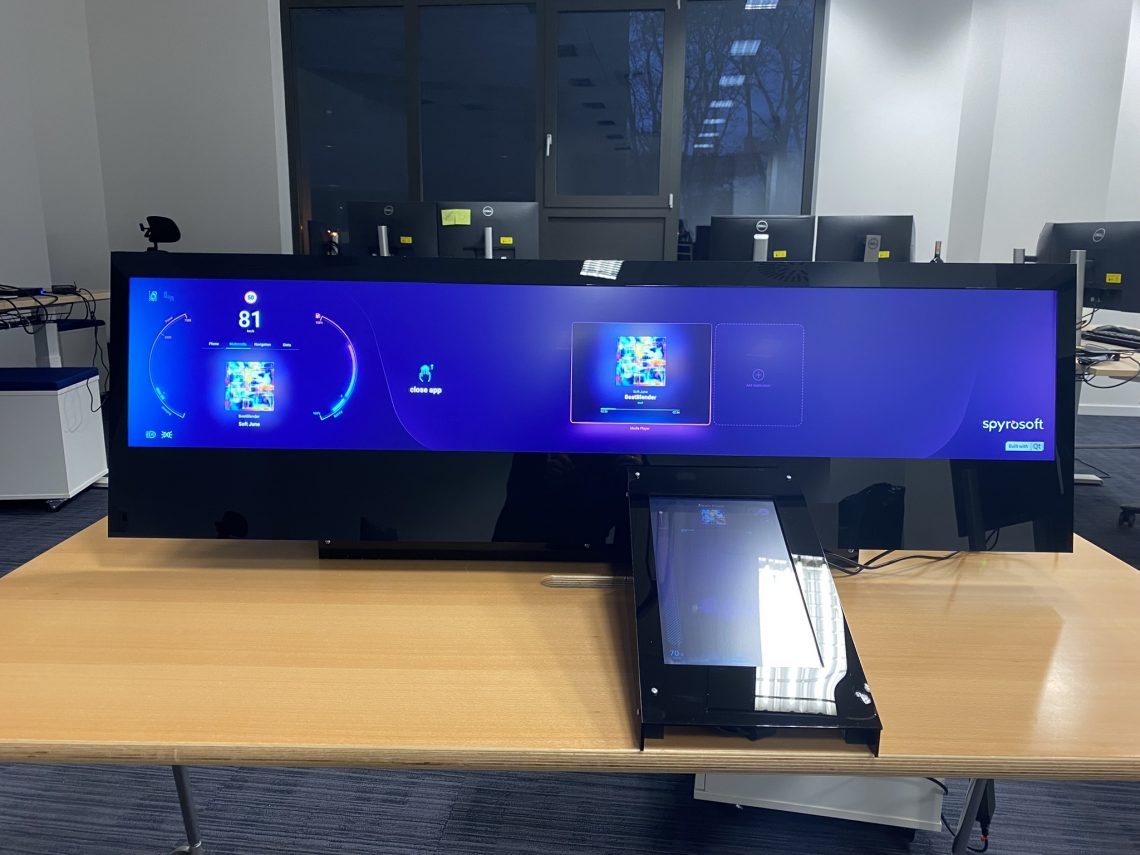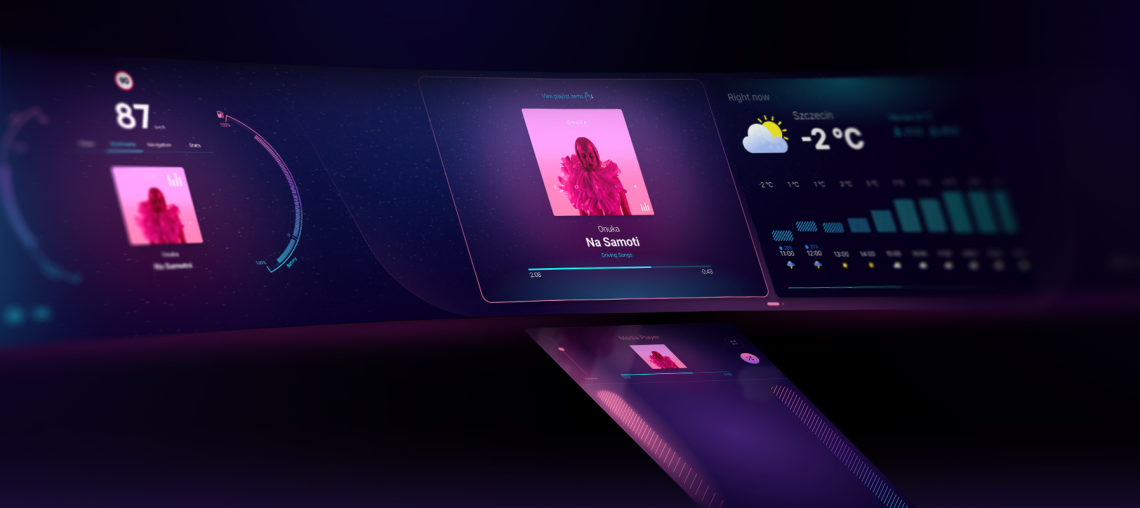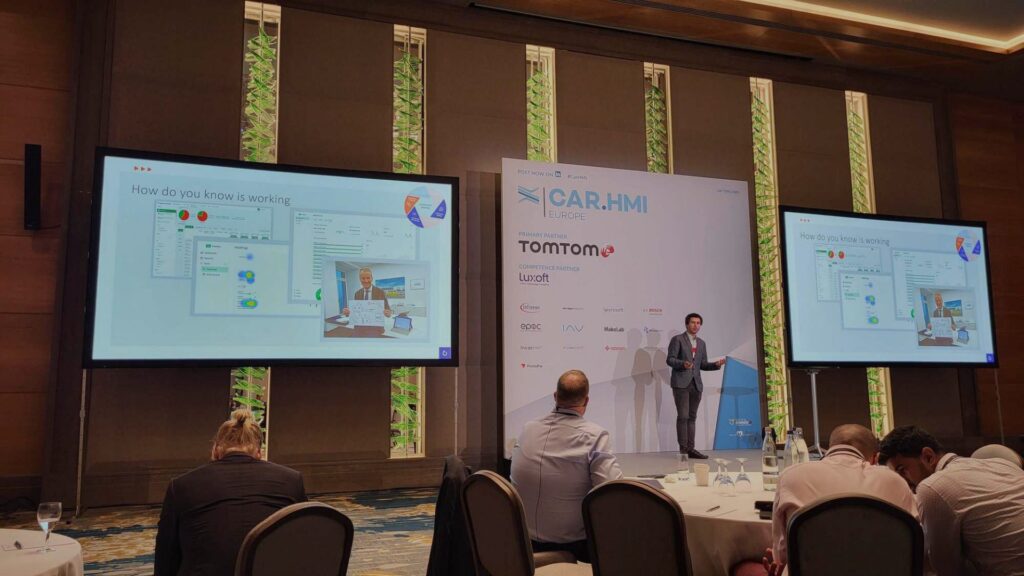Automotive HMI design: Wavey project demo at CES 2023
CES (Consumer Electronic Show) is the biggest annual trade show held in Las Vegas that hosts presentations of new products and technologies in the consumer electronics industry, ranging from TVs and mobile phones to automotive solutions.
This year, as part of our partnership with the Qt company, we’re very proud to be presenting our most recent automotive HMI design project demo at CES. If you’re curious to find out more details about it, read on.
What is Wavey?
Sebastian Błoński (HMI Director and Product Owner): Wavey is an in-vehicle infotainment demo. It is designed for Android Automotive using Qt technology. The aim of Wavey is to enable the operation of the IVI using gestures on a small touch screen located in the centre console of a car, so the driver is not distracted by interacting with the screen on the dashboard.

By using hand movements to control various car functions, the driver no longer has to look away from the road. We naturally use hand movements for control in daily life, for example, swiping left, right, up and down or pinching a screen. However, the hand movements used to operate the Wavey IVI differ from the ones used with traditional touch screens. When swiping or making single or multitouch gestures, you don’t have to hit specific screen areas, such as buttons or icons. The gesture can be made in any area of the screen. This significantly helps to minimise driver distraction.
Our designers did an awesome job creating a functional and very aesthetically pleasing UI, which can be tailored to a car manufacturer’s branding and doesn’t have to resemble a typical Android Automotive interface. We used the Qt framework to achieve that as it allows a quicker and more efficient creation of graphical user interfaces. Also, it’s worth mentioning that the design is built on an innovative microHMI architecture.

Przemysław Nogaj (Head of HMI technology): We wanted to answer the question: ‘how do we build complex systems in the software-defined vehicle (SDV) era?’. All the discussions around this topic mainly relate to very low-level aspects of the system behaviour, but very rarely address the visual layer. Our aim was to make UI design workflow more efficient by making the UI more modular, so it’s possible to develop specific fragments of user interface independently. For this purpose, we have created our own original architecture, which we call MicroHMI.
Why is this such an innovative approach to automotive HMI design?
Przemysław Nogaj: Wavey demo proves that companies no longer have to give up their brand identity in Android-based automotive infotainment systems. They can demonstrate their branding without compromising the best aspects of the Android Automotive offering. For example, integrations with third-party apps, such as Spotify, mature system and middleware architecture.
Micro HMI architecture speeds up the development process, by applying a granular approach to designing and building UI in automotive solutions. The architecture is broken down to
“atomic” fragments, so each element can be developed and updated independently, both from the visual and business logic perspective. It also allows for quick prototyping and testing of the solution’s usability.
It’s worth mentioning that the project was developed within Dojo – our internal R&D initiatives framework. As part of the project, our designers wanted to verify certain hypotheses related to usability.

Over to you
The Wavey demo will be on show at CES 2023 on January 5 at the Qt Company exhibition space. If you’d like to see it live at the exhibition, contact Przemysław Nogaj at pno@spyro-soft.com or via LinkedIn, and we’ll arrange the opportunity.
If you’d like to find out more about our automotive HMI design and development offer, visit our HMI development services page or contact Przemysław Nogaj via the form below.
About the author
RECOMMENDED ARTICLES




